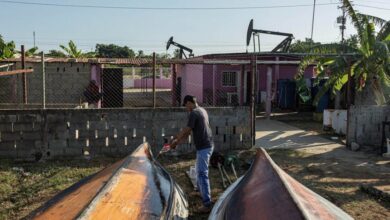The ozone layer is not safe
According to the Federal Polytechnic Institute of Zurich, despite the recovery of ozone at the poles, the tropics continue to weaken

The Federal Polytechnic Institute of Zurich (ETH Zurich) and the Physical-Meteorological Observatory of Davos published an alarming discovery regarding the ozone layer: it continues to thin out.
The scientific community had identified that, at the beginning of the millennium, the loss of stratospheric ozone had stopped, and it was even thought that “the global ozone layer would recover completely by the middle of the 21st century”. However, the discovery recently made by Swiss institutions, the news is not so encouraging.
In addition it was identified that the atmospheric damage occurs in the middle latitudes and the tropics (a strip that covers the greatest amount of population) between latitudes 60º South and 60º North.
The ozone layer serves as a protection for life on the planet, as it captures the radiation of the ultra violet rays of the sun. Ozone is formed in the stratosphere, mainly above 30 kilometers in the tropics. From there it is distributed throughout the planet by an atmospheric circulation.
The team of researchers measured using satellite images and with advanced statistical methods that during the last 3 decades have continued to decrease
William Ball, atmospheric researcher at the ETH Zurich and author of the study explained that “thanks to the Montreal Protocol, ozone the upper stratosphere (greater than 30 km) has increased significantly since 1998 and the stratosphere is recovering at the poles”. However, despite the measures taken and according to the analysis, the total ozone column has remained constant, so experts believe that ozone levels in the lower stratosphere must have been reduced.
Why does the ozone layer continue to shrink?
According to the study, there is still no certainty in the reasons why the layer is shrinking. The authors have 2 hypotheses. The first is that with climate change has modified the patterns of atmospheric circulation, which has moved the air currents from the tropics to the poles much faster. This shows the slow and slow speed in which the layer is rebuilt in the middle of the planet.
The second explanation of the study is that “highly ephemeral substances (substances found in the atmosphere) that contain chlorine and bromine are increasing and may be entering the lower stratosphere, for example as a result of electrical storms”. These substances are composed partly by nature and partly by industry.
Not everything is so alarming
The consequences of a lower stratosphere with little ozone are not yet known. However, according to Thomas Peter, Professor of Atmospheric Chemistry at ETH and co-author of the study, the findings are worrisome, but not alarming. “The observed decrease is much less pronounced than before the Montreal protocol, the impact of the protocol is indisputable, as evidenced by the trend in the upper stratosphere and at the poles, but we must keep an eye on the ozone layer and its function filtering UV rays in the mid-latitudes and the tropics that are densely populated.
Latin American Post | Santiago Gómez Hernández
Translated from “La capa de ozono no está a salvo”





